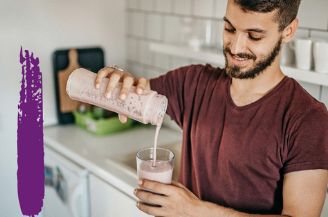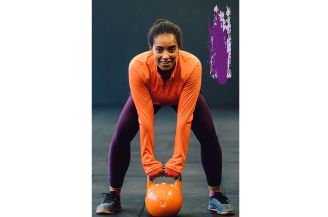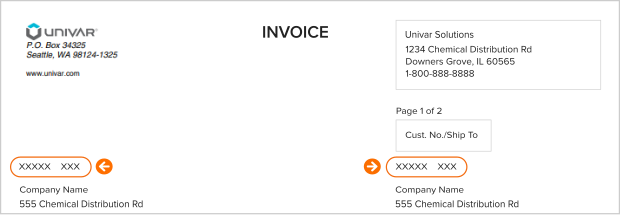We’re here to provide you with more information or help answer any questions you might have. Send us a note and we’ll get back to you as soon as possible.






Active nutrition and holistic health
The World Health Organization (WHO) describes health as "a state of complete physical, mental and social well-being and not merely the absence of disease or infirmity."
Overall health is a congregate of a myriad of factors that start at preconception and take course through the life span. The importance of nutrition and body movement is not only imperative for physical health but also cognitive health. A healthy diet and physical activity are critical to thwart several metabolic disorders.
Practicing active nutrition as a lifestyle is both an art and science, combining a more proactive approach to health with a deeper understanding of the requirements of a human body and mind.
Active nutrition is a multidimensional approach to health. Relevant to all stages throughout life, it supports overall health and wellbeing. Inclusive of all demographics, it focuses on enhancing human performance—both physical and mental. There are a multitude of factors that contribute to performance enhancement in an active lifestyle. With more people in tune with their health, active nutrition is becoming the new normal.
Sports nutrition brands that originally focused on elevating physical performance and delivering competitive advantages have acknowledged the need for their products outside their core consumers. Today, more companies are gradually diversifying their products to focus on holistic health that appeals to consumers of any age.
The projections
According to 360 Research Reports, the global active nutrition market is projected to double by 2028 to reach an estimated USD 24.77 billion.
The need for overall health and wellness throughout all stages of life opens up a wide consumer base for the active nutrition market. There are various factors influencing the growth of active nutrition. The shift from life span to health span, focus on positive aging, and the mushrooming inclination toward fitness, where exercise and body movement are a consistent part of life, are significant in driving this growth.
However, nutrient need and demand varies among these consumer groups.
The adult active nutrition consumer understands the need to have a healthy diet, active lifestyle, and supplements for a sound body and mind. Supplements are an easy way to address nutrient gaps. There has been a bigger shift in consumers recognizing the importance of gut microbiome on overall health.


The need for better immunity, sleep, mood, and mental acuity is as important as energy and physical strength.
FMCG Gurus report that 64% of global consumers are becoming more conscious about their immune health since the pandemic (FMCG Gurus, 2021).
Healthy nutrition can provide physical confidence and psychological readiness for exercise. Consumers are increasingly becoming aware of the consequences of nutrition and physical movement, not only on internal and external physiological health, but also cognitive and social health.
Mainstream health trends such as beauty from within, immunity, and gut health all share a common theme: the focus on holistic health.
Both physiological and psychological fatigue can challenge an active lifestyle. Although it is a result of several functions within the human body, there is evidence that brain neurochemistry plays an important role in fatigue regulation. Formulating products that target physical, mental, and cognitive health will offer competitive edge.
Addressing cognitive and mental health
Sub-segments in active nutrition
Euromonitor identifies the functional foods and beverages category as the key area for active nutrition products (Euromonitor, 2016). Many consumers are looking for alternatives to solid-dose supplements because of ‘pill fatigue’ and this opens a much broader white space to incorporate functional ingredients in food and other natural health products.
According to the Nutrition Business Journal (2021), hydration and energy are the two biggest categories for active nutrition occupying 67.8% market share followed by sports nutrition supplements, mainly powder and pills at 16%. Bars and gels make up 13.6% of the total market share with protein ready-to-drinks (RTDs) filling up the rest of the market space with 2.6% share.
Having access to products that are convenient, easy to consume, and can provide multiple benefits at once will be more appealing. As the benefits of botanicals and their core constituents are gaining awareness, their use and acceptability as functional ingredients has gone up significantly. With science behind them, nootropics and adaptogens have found use in functional beverages. Incorporation of ergogenic aids is no longer limited to sports nutrition. Caffeine is frequently being adopted outside energy drinks into chocolates and bars. Popular drinks for hydration are reformulating to incorporate ergogenic aids like creatine and branched chain amino acids (BCAAs). Innovators and manufacturers of sports nutrition products have an opportunity to persuade the need for their product to the active nutrition consumer.
As brands continue to identify white space opportunities, there are a variety of ingredients that can help deliver mood, anti-stress, cognitive and overall wellness benefits. Focusing on the interconnectedness of physiological mechanisms will provide an opportunity to interlace trends.


For example, adding prebiotics to address both gut health and immunity; addition of botanicals like ashwagandha to capitalize on its cognitive and apoptogenic properties or addition of collagen to address joint health, skin health, and boost one’s protein level.
Tapping into the evolving connection between sleep, mood, energy, and immunity via the gut microbiome will help both manufacturers and consumers. Synbiotics can help support the gut microbiome to provide a whole slew of physiological and mental benefits.
Combining soluble prebiotics with mineral electrolytes and vitamins could deliver a competitive advantage in the highly concentrated hydration category. Sweeter prebiotics like Fructooligosaccharides (FOS) can also help address flavor challenges and provide natural sweetness. Adding potent anti-inflammatories such as omega 3 fatty acids, turmeric or polyphenols in supplements for high-intensity workouts could help reduce muscle recovery time.
One of the biggest challenges is the assumption that unfamiliar ingredients are not natural or clean (e.g. FOS). To navigate around the challenges that come with novel launches, brands have an opportunity to educate consumers on the science and nutrient labeling.


Healthy aging
Healthy aging is no longer limited to later in life. It embraces aging and incorporates approaches focused on health sustenance, preservation, and life extension. According to the United Nations, almost 16% of the world population will be 65 years or older by 2050. Given that estimate, one in every six people will be 65+ in age. This will significantly expand the market demand for consumer products that support healthy aging.
There is a rising interest in geroscience, a scientific approach to understanding the relationship between aging and age-related diseases. In addition, inflammation, metabolism, epigenetics, and stress are all major areas of research in aging. It is key to understand how and why chronic diseases affecting primary organs can impair other organs and systems. This can provide a more holistic view of diseases that could lead to multiple possible interventions. Antidepressants are a great example. While they were created to treat depression, research studies have shown they function as analgesics that help in pain reduction. A strong brain-gut connection also makes them effective in managing IBS symptoms.
Dietary supplementation has been identified as a potential therapeutic approach to prevent the disruption of epigenetic mechanisms that can result in oxidative stress, insulin resistance, diabetes, obesity, and vascular dysfunction (Wang et al., 2012).
Addressing nutrient inadequacy
There are several factors that influence nutrient needs: age, gender, genetic conditions, physical activity, etc. Meeting nutritional needs in accordance with activity level is crucial. Adequate intake of micronutrients is essential to maintaining overall health across the life span. Various surveys have investigated the prevalence of nutrient deficiencies globally. Approximately one-third of the U.S. population over nine years of age is considered to be at risk of deficiency in at least one vitamin (Bird et al., 2017). After analyzing nutrient deficiency in many European countries, researchers found that Vitamins C and D, folic acid, calcium, selenium, and iodine showed higher prevalence of inadequate intakes (Roman Viñas et al., 2011). Among other functions, optimum levels of micronutrients are fundamental to a well-functioning immune system. Both insufficiency and deficiency of micronutrients can adversely affect immune health. This gap can easily be abridged by regular use of dietary supplements.
Addressing obesity and metabolic disorders
Chronic metabolic diseases have a significant impact on morbidity, mortality, and socioeconomic costs.
The risks of maternal metabolic disorders affecting the health of their offspring have been well documented. Interestingly, evidence from both human and animal studies show a direct correlation between paternal obesity (during conception) and offspring health (Billah et al., 2022).
WHO data indicates that almost 13% of the global population is obese, a rate that has nearly tripled in the last four decades. In the U.S. alone, more than 42% of adults and 19.3% of young people between ages 2-19 were obese in 2020, according to the American Obesity Association. Active nutrition can play a critical role in promoting healthy weight and health benefits that follow through, including blood pressure management, blood sugar management, and healthy cholesterol levels.




Nascent curiosity in ingredients and science
Consumer interest in understanding label claims and the associated scientific evidence is growing. Consumers are generally more acceptable of science-driven innovations in the health and wellness sector. There has been a paradigm shift from eliminating 'bad' from the diet to including 'good' in the diet. Healthy fats are no longer bad and moderation is the key. The concept of 'mindful eating' is gaining popularity as a nutrition intervention in the health care industry. Mindful eating promotes conscious eating to develop a healthier relationship with food and manage the subsequent effects of overindulging.
Food alternatives are no longer limited to dietary restrictions. With more health and planet awareness, alternatives are widely accepted, from alternatives for sea salt to reduce high blood pressure to animal protein alternatives to help reach certain health goals. Protein alternatives are not just limited to plant protein, but also include algal sources and insect sources.
The demand for natural and therapeutic ingredients coupled with ‘pill fatigue’ will open doors to more functional food launches. Keeping wellbeing at the forefront of innovation will be key to generate interest and meet these evolving needs.
Prioritizing self-care
Collective physical and cognitive nourishment will contribute to a healthier civilization. Philosophers argue that happiness must be the outcome of everything we do. With happiness, life enhances and without it, life withers (Singh, 2019). Health begets happiness. Happiness begets health. Aging well is living well.
Tour the Wellness Academy for valuable insights and resources to help you on your new health and wellness product development journey
- Billah, M. M., Khatiwada, S., Morris, M. J., & Maloney, C. A. (2022). Effects of paternal overnutrition and interventions on future generations. International journal of obesity (2005), 10.1038/s41366-021-01042-7. Advance online publication. https://doi.org/10.1038/s41366-021-01042-7
- Bird, J. K., Murphy, R. A., Ciappio, E. D., & McBurney, M. I. (2017). Risk of Deficiency in Multiple Concurrent Micronutrients in Children and Adults in the United States. Nutrients, 9(7), 655. https://doi.org/10.3390/nu9070655
- Crimmins E. M. (2015). Lifespan and Healthspan: Past, Present, and Promise. The Gerontologist, 55(6), 901–911. https://doi.org/10.1093/geront/gnv130
- Euromonitor International. (2016, January 29). What is ‘active nutrition’ and how can health and wellness players leverage the concept? Retrieved January 2, 2022, from Euromonitor website: https://www.euromonitor.com/article/what-is-active-nutrition-and-how-can-health-and-wellness-players-leverage-the-concept
- FMCG gurus: What’s Next for Immune Health in 2021? (2021, February 8). Retrieved January 6, 2022, from FMCG Gurus website: https://fmcggurus.com/blog/fmcg-gurus-whats-next-for-immune-health-in-2021/
- Nutrition Business Journal (NBJ). (March 2021). Active Lifestyle Issue. Strategic Information for the Nutrition Industry.
- GLOBAL ACTIVE NUTRITION MARKET INSIGHTS AND FORECAST TO 2028. (n.d.). Retrieved January 24, 2022, from 360Researchreports.com website: https://www.360researchreports.com/global-active-nutrition-market-19965895
- Roman Viñas, B., Ribas Barba, L., Ngo, J., Gurinovic, M., Novakovic, R., Cavelaars, A., de Groot, L. C., van’t Veer, P., Matthys, C., & Serra Majem, L. (2011). Projected prevalence of inadequate nutrient intakes in Europe. Annals of nutrition & metabolism, 59(2-4), 84–95. https://doi.org/10.1159/000332762
- Singh, V. (2019). Fertilizing the universe: A new chapter of unfolding evolution. Newcastle upon Tyne, England: Cambridge Scholars Publishing.
- Wang, J., Wu, Z., Li, D., Li, N., Dindot, S. V., Satterfield, M. C., Bazer, F. W., & Wu, G. (2012). Nutrition, epigenetics, and metabolic syndrome. Antioxidants & redox signaling, 17(2), 282–301. https://doi.org/10.1089/ars.2011.4381




